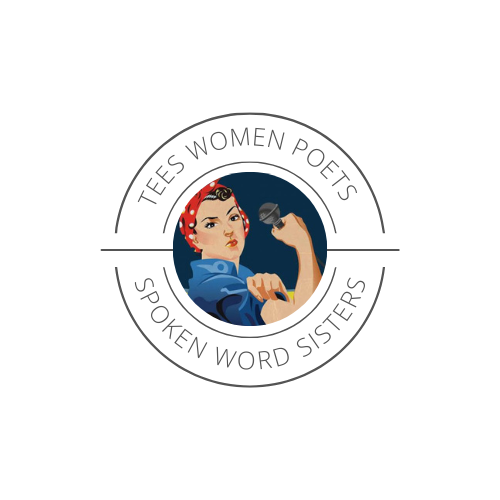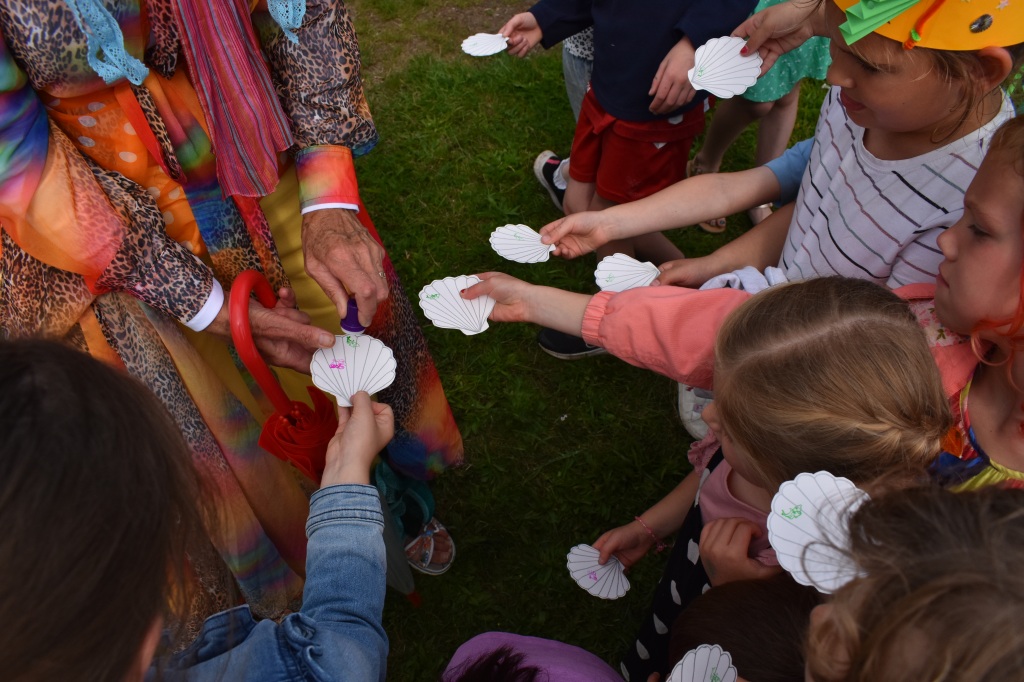How does a poet-in-residence turn the conversations they have with the public into a body of original work? Read on for reflections from Audrey Cook, thinking about her three poems in MIMAzina issue #32 and how they came about from working with children at MIMA’s Art Trolley during the exhibition People-Powered: Stories from the River Tees. Read the whole zine here!
‘What lives in the Tees?’
What lives in the tees?
Is it bees?
Is that where they keep all their honey?
And that’s why the river looks murky?
What lives in the tees
Chimpanzees!
Took a break from their game of clambering trees
Followed a river from jungle to boro
And they all have the names of Arsenal footballers.
My sister actually lives in the tees
She’s an infantile super spy mermaid you see!
She’s shown brilliant skill to inherit her gills
She’s evil and constantly watching me.
Are there treats in the tees?
They could fill our bellies!
Look to critters in rivers to feed us fish fingers.
My brothers and sisters are hungry.
Come live in the tees!
The river decrees!
There are dolphins and turtles and fish having parties
Dads local has closed and it’s hurting his bones
I’ll tell him and he should be pleased
Did I mention my favourite colour is green?
So the River Tees never looked spooky to me
I jumped in it once, met a family of frogs
Their hues were the limeyest slimeyest dream
As above so below really should mean
That the river is rotten and scary
Endeavour or you’ll never find any treasure
There’s more to these waters than trollies
The children’s stories liberated me, and what they were suggesting was under the water, provided a hopeful backdrop to what was looking more and more like a bleak and heavy reality that people were living on ground. The Tees became a haven, a utopia that people could escape to, and only those that are stopping to listen, and look will see what gifts can provide to our lives above ground. There was a naivety to their stories that I encouraged wholeheartedly, and it really has its place in the spotlight in this poem. This was the poem that I wanted to showcase as many of the stories that the children told as I could – fill it to the brim with playfulness and allow us to see our adult lives from a child’s lens. I like to think that the ‘treasures’ mentioned in this poem are not actually found in the Tees, but in the imagination of these young generations. That is a tangible resource we should be constantly tapping into and giving back to each other. The celebration of reckless childishness is something that I hope comes across in all of the poems I’ve written for this residency.

‘Cringe’
Go to bed tonight in the mind of a child
Open the tiny door at the end of their nose and clamber in,
There’s more room than you think.
Get yourself wrapped in that synapse
Nap in the neurons
Do the ‘~cerebellum melt~’.
Like a hotel bed, it’s soft. Crisp clean sheets.
And you think to yourself that whilst you do love your own bed, there’s a joy in the
unfamiliarity of this one.
When was the last time you had so much room to lie outstretched?
You didn’t even notice your limbs were so long!
Cartoonishly long!
All ‘old-timey rubber hose’ with no elbows or knees!
All ‘Jake the Dog’!
All ‘Goofy Movie’!
My mam told me last week: she doesn’t see the world in cartoons anymore.
And it scared me.
Tonight, I will rest. I will remain still.
And squeeze the squishy bits of this brain that hasn’t yet learned what ‘cringe’ means.
I hope they never will.
The poem came from something I was noticing when writing these stories at the Art Trolley: if a child was left to figure out by themselves what they thought lived in the Tees, the stories were wild, and colourful, and bizarre. If their grown-ups helped, the stories had far more logic, reality, and mundanity to them, this was a discovery that fascinated me. I began to interrogate at what point adults begin to lose grip of their inner child, and why it feels essential to rediscover that in ourselves however we can. The word ‘Cringe’ came to mind. Most things that are considered cringe are things that seem childish and strange, but ultimately harmless. To call something or someone ‘cringe’ feels loaded with judgement, and I believe it’s something many adults fear quite heavily. I wanted this poem to feel like a guided meditation, designed to nurture the inner child within ourselves, in hopes that we find avenues to find playfulness in our lives in anyway we can.

‘Clip art child: a Greek epic’
The clear shape of a child approached me
So clear that I mistook it as real, and not a walking, talking, cartoon.
Two feet high, as tall as they are wide, it’s a dungarees and wellies party, with painted on
freckles and rosy cheeks.
If toddlers were in the army, this was their General.
“Beware of the Goatman ” it announces, passing the one giant tooth in the centre of its
mouth.
A statement so out of pocket my knees buckle
And I say ‘it’ – not to be derogatory, but because ‘Clipart child’ transcends gender binaries.
An omnipotent being that was sent from hell to kill me.
The unhinged leader of the ‘Cult of Cute’.
“The Goatman is mean, he lives in the Tees
Pinching children and grown-ups, he isn’t fussy
He’s slick, creepy, crawly
Almost predatory
Not that I know what that means”.
A hush falls
The air feels still
Yet its little propeller hat still spins independently.
It unleashes the gummiest snottiest smile
Clip art child knows it has defeated me
One last quick lick of the rainbow lollipop the size of its head, and off it goes into the night
atop its tricycle steed.
Ready for another day,
Of saying whatever the hell it wants.
In practicing creating without fear or judgment, I’m going to refrain from explaining this poem too much. The interaction I talk about in this poem is 100% true. I asked one child what lives in the Tees as I had with every other child that walked into the Art Trolley, and without hesitation, she said ‘The Goatman’ and proceeded to tell me the most horrifically dark story about the Goatman as if she was reading it from scripture. It was amazing. And what seemed like a necessary piece of context to this
story, was that she was the most adorable girl I had ever seen. About 5 years old. In my artist practice, I love to work with caricature to a cartoonish level. It’s my way of tapping into my aforementioned ‘inner child’. And the more I told the story of the Goatman to people, the more
my description of the girl who told me the story grew more and more exaggerated. Until she had exceeded cartoon, she was ‘clip art’, clip art being the cartoon stock images Microsoft used to have. The concept of a ‘clip art child’ really tickled me, and having this be the voice of an extremely dark story made me think I had to write a poem about this interaction alone. It had to get out of my brain and onto a page somehow.
I think the result of this poem has chaos and frantic energy bursting at the seams. And no amount of redrafting and rewriting changed that. It was the one constant amongst every draft. To me, it screams ‘this was a real interaction and I am desperate for you to see it how I saw it’ So I decided to go with it rather than against it, make piece with the fact that this would not be a perfectly polished piece of writing, and actually, being that would be a huge disservice to it. The result was this melodrama, this Mexican standoff, this telenovela, this extremely tiny interaction now had ‘Greek Epic’ scale.

